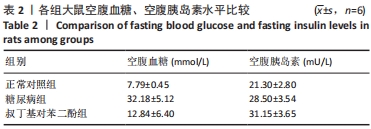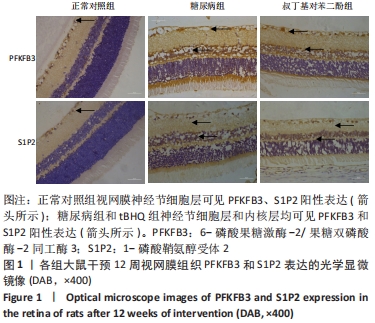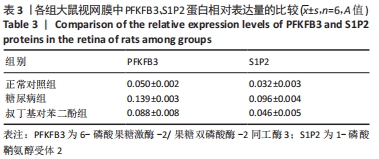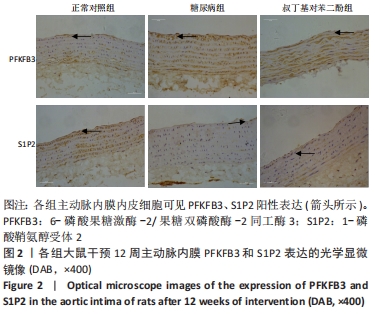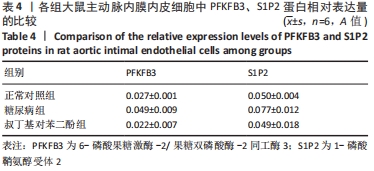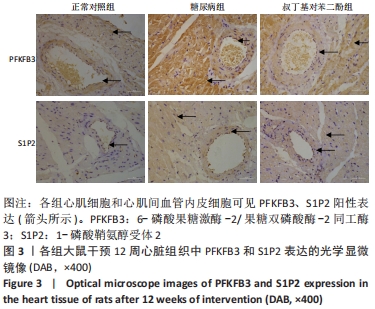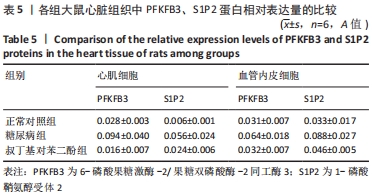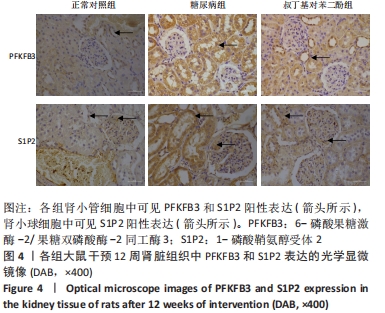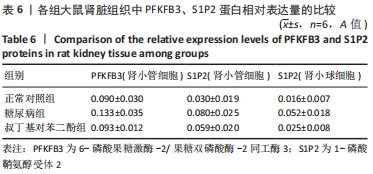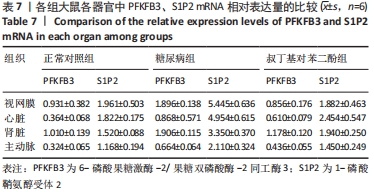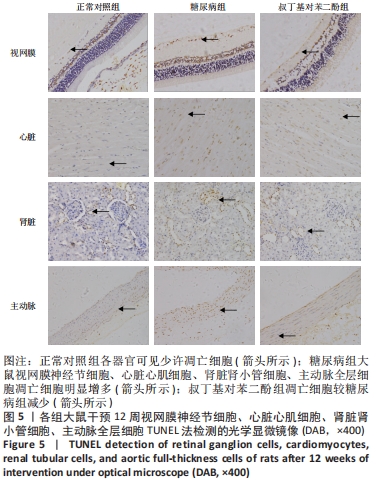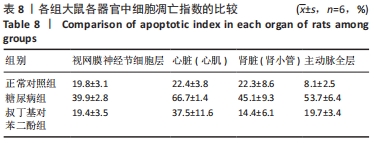[1] LA SELVA M, BELTRAMO E, PAGNOZZI F, et al. Thiamine corrects delayed replication and decreases production of lactate and advanced glycation end-products in bovine retinal and human umbilical vein endothelial cells cultured under high glucose conditions. Diabetologia. 1996;39(11):1263-1268.
[2] OBINATA H, HLA T. Sphingosine 1-phosphate in coagulation and inflammation. Semin Immunopathol. 2012;34(1):73-91.
[3] 侯云雷, 张昱, 夏娟娟, 等. 6-磷酸果糖-2-激酶3抑制剂的研究进展[J]. 中国药物化学杂志,2016,26(1):65-70.
[4] ATSUMI T, CHESNEY J, METZ C, et al. High expression of inducible 6-phosphofructo-kinase/fructose-1,6-bisphosphatase(iPFK-2;PFKFB3) in human cancers. Cancer Res. 2002;62(20):5881-5887.
[5] SHI L, PAN H, LIU Z, et al. Roles of PFKFB3 in cancer. Signal Transduct Target Ther. 2017;2:17044.
[6] SCHNITZLER JG, HOOGEVEEN RM, ALI L, et al. Atherogenic Lipoprotein(a) Increases Vascular Glycolysis, Thereby Facilitating Inflammation and Leukocyte Extravasation. Circ Res. 2020;126:1346-1359.
[7] BOCK KD, GEORGIADOU M,SCHOORS S, et al. Role of PFKFB3-driven glycolysis in vessel sprouting. Cell. 2013;154(3):651-663.
[8] SCHOORS S, DE BK, CANTELMO AR, et al. Partial and transient reduction of glycolysis by PFKFB3 blockade reduces pathological angiogenesis. Cell Metab. 2014;19(1):37-48.
[9] ZHOU ZY, WANG L, WANG YS, et al. PFKFB3:A Potential Key to Ocular Angiogenesis. Front Cell Dev Biol. 2021;9:628317.
[10] EMINI VESELI B, VAN WIELENDAELE P, DELIBEGOVIC M, et al. The PFKFB3 Inhibitor AZ67 Inhibits Angiogenesis Independently of Glycolysis Inhibition. Int J Mol Sci. 2021;22:5970.
[11] LIU Z, XU J, MA Q, et al. Glycolysis links reciprocal activation of myeloid cells and endothelial cells in the retinal angiogenic niche. Sci Transl Med. 2020;12(555): eaay1371.
[12] LI L, ZENG H, HE X, et al. Sirtuin 3 Alleviates Diabetic Cardiomyopathy by Regulating TIGAR and Cardiomyocyte Metabolism. J Am Heart Assoc. 2021;10: e018913.
[13] HATOUM D, HADDADI N, LIN Y, et al. Mammalian Sphingosine Kinase (SphK) Isoenzymes and Isoform Expression: Challenges for SphK as an Oncotarget. Oncotarget. 2017;8:36898-36929.
[14] AOKI M, AOKI H, RAMANATHAN R, et al. Sphingosine-1-Phosphate Signaling in Immune Cells and Inflammation: Roles and Therapeutic Potential. Mediators Inflamm. 2016;2016:1-11
[15] MACEYKA M, HARIKUMAR KB, MILSTIEN S, et al. Sphingosine-1- phosphate Signaling and its Role in Disease. Trends Cel Biol. 2012;22:50-60.
[16] KOWALSKI GM, CAREY AL, SELATHURAI A, et al. Plasma Sphingosine-1-Phosphate Is Elevated in Obesity. PLoS ONE. 2013;8(9):e72449
[17] SPIEGEL S, MILSTIEN S. Sphingosine 1-phosphate, a key cell signaling molecule. J Biol Chem. 2002;227(29):25851-25854.
[18] SPIEGEL S, MILSTIEN S. Sphingosine-1-phosphate:an enigmatic signaling lipid. Nat Rev Mol Cell Biol. 2003;4(5):397-407.
[19] SANCHEZ T, SKOURA A, WU MT, et al. Induction of vascular permeability by the sphingosine-1-phosphate receptor-2(S1P2R)and its downstream effectors ROCK and PTEN. Arterioscler Thromb Vase Biol. 2007;27(6):1312-1318.
[20] TERAO R, HONJO M, AIHARA M. Apolipoprotein M Inhibits Angiogenic and Inflammatory Response by Sphingosine 1-Phosphate on Retinal Pigment Epithelium Cells. Int J Mol Sci. 2018;19(1):112.
[21] QIAO Y, HU R, WANG Q, et al. Sphingosine 1-phosphate elicits proinflammatory responses in ARPE-19 cells. Investig Ophthalmol Vis Sci. 2012;53:8200-8207.
[22] SWANEY JS, MORENO KM, GENTILE AM, et al. Sphingosine-1-phosphate (S1P) is a novel fibrotic mediator in the eye. Exp Eye Res. 2008;87:367-375.
[23] KERAGE D, BRINDLEY DN, HEMMINGS DG. Review: Novel insights into the regulation of vascular tone by sphingosine 1-phosphate. Placenta. 2014;35:S86-S92.
[24] IGARASHI J, MICHEL T. Sphingosine-1-phosphate and modulation of vascular tone. Cardiovasc Res. 2009;82:212-220.
[25] KONO M, MI Y, LIU Y, et al. The sphingosine-1-phosphate receptors S1P1, S1P2, and S1P3 function coordinately during embryonic angiogenesis. J Biol Chem. 2004;279(28):29367-29373.
[26] ZHANG X, RITTER JK, LI N. Sphingosine-1-Phosphate pathway in renal fibrosis. Am J Physiol Renal Physiol. 2018;315(4):F752-F756.
[27] LIU W, LAN T, XIE X, et al. S1P2 receptor mediates sphingosine-1-phosphate-induced fibronectin expression via MAPK signaling pathway in mesangial cells under high glucose condition. Exp Cell Res. 2012;318(8):936-943.
[28] LAN T, LIU W, XIE X, et al. Sphingosine kinase-1 pathway mediates high glucose-induced fibronectin expression in glomerular mesangial cells. Mol Endocrinol. 2011;25(12):2094-2105.
[29] YASUDA S, SUMIOKA T, IWANISHI H, et al. Loss of sphingosine 1-phosphate receptor 3 gene function impairs injury-induced stromal angiogenesis in mouse cornea. Lab Invest. 2021;101:245-257.
[30] GAENGEL K, NIAUDET C, HAGIKURA K, et al. The sphingosine-1-phosphate receptor S1PR1 restricts sprouting angiogenesis by regulating the interplay between VE-cadherin and VEGFR2. Dev Cell. 2012;23:587-599.
[31] GREEN JA, SUZUKI K, CHO B, et al. The sphingosine 1-phosphate receptor S1P(2) maintains the homeostasis of germinal center B cells and promotes niche confinement. Nat Immunol. 2011;12:672-680.
[32] SKOURA A, SANCHEZ T, CLAFFEY K, et al. Essential role of sphingosine 1-phosphate receptor 2 in pathological angiogenesis of the mouse retina. J Clin Investig. 2007; 117:2506-2516.
[33] CAO Y, ZHANG X, WANG L, et al. PFKFB3-mediated endothelial glycolysis promotes pulmonary hypertension. Proc Natl Acad Sci. 2019;116:13394-13403.
[34] RIERA L, MANZANO A, NAVARRO-SABATE A, et al. Insulin induces PFKFB3 gene expression in HT29 human colon adenocarcinoma cells. Biochim Biophys. 2002; 1589:89-92.
[35] TSUTSUI S, KUME M, ERA S. Prognostic value of microvessel density in invasive ductal carcinoma of the breast. Breast Cancer. 2003;10:312-319.
[36] OFFERSEN BV, BORRE M, OVERGAARD J. Quantification of angiogenesis as a prognostic marker in human carcinomas: a critical evaluation of histopathological methods for estimation of vascular density. Eur J Cancer. 2003;39:881-890.
[37] FRAISL P, MAZZONE M, SCHMIDT T, et al. Regulation of angiogenesis by oxygen and metabolism. Dev Cell. 2009;16:167-179.
[38] XU Y, AN X, GUO X, et al. Endothelial 6-phosphofructo-2-kinase (PFKFB3) plays a critical role in angiogenesis. Arterioscler Thromb Vasc Biol. 2014;34(6):1231-1239.
[39] SCHOORS S, DE BOCK K, CANTELMO AR, et al. Partial and transient reduction of glycolysis by pfkfb3 blockade reduces pathological angiogenesis. Cell Metab. 2014;19:37-48.
[40] PERROTTA P, VAN DER VEKEN B, VAN DER VEKEN P, et al. Partial inhibition of glycolysis reduces atherogenesis independent of intraplaque neovascularization in mice. Arterioscler Thromb Vascu Biol. 2020;40:1168-1181.
[41] GANBAATAR B, FUKUDA D, SHINOHARA M, et al. Inhibition of S1P Receptor 2 Attenuates Endothelial Dysfunction and Inhibits Atherogenesis in Apolipoprotein E-Deficient Mice. J Atheroscler Thromb. 2021;28:630-642.
[42] GONG W, LI J, CHEN W, et al. Resveratrol Inhibits Lipopolysaccharide-Induced Extracellular Matrix Accumulation and Inflammation in Rat Glomerular Mesangial Cells by SphK1/S1P2/NF-κB Pathway. Diabetes Metab Syndr Obes. 2020;13:4495-4505.
[43] 田敏, 张思远, 韩佩晏, 等.叔丁基对苯二酚激活Nrf2信号通路增强对2型糖尿病大鼠视网膜的保护作用[J].眼科新进展,2017,37(3):220-224.
[44] 李航, 任韫卓, 刘淑霞, 等. 叔丁基对苯二酚对糖尿病小鼠肾脏氧化应激损伤及Nrf2蛋白表达的影响[J]. 中国药理学通报,2009,25(10):1341-1345.
[45] KOVACS L, CAO Y, HAN W, et al. PFKFB3 in Smooth Muscle Promotes Vascular Remodeling in Pulmonary Arterial Hypertension. Am J Respir Crit Care Med. 2019;200(5):617-627.
[46] MUPPIDI JR, SCHMITZ R, GREEN JA, et al. Loss of signalling via Gα13 in germinal centre B-cell-derived lymphoma. Nature. 2014;516:254-258.
|

